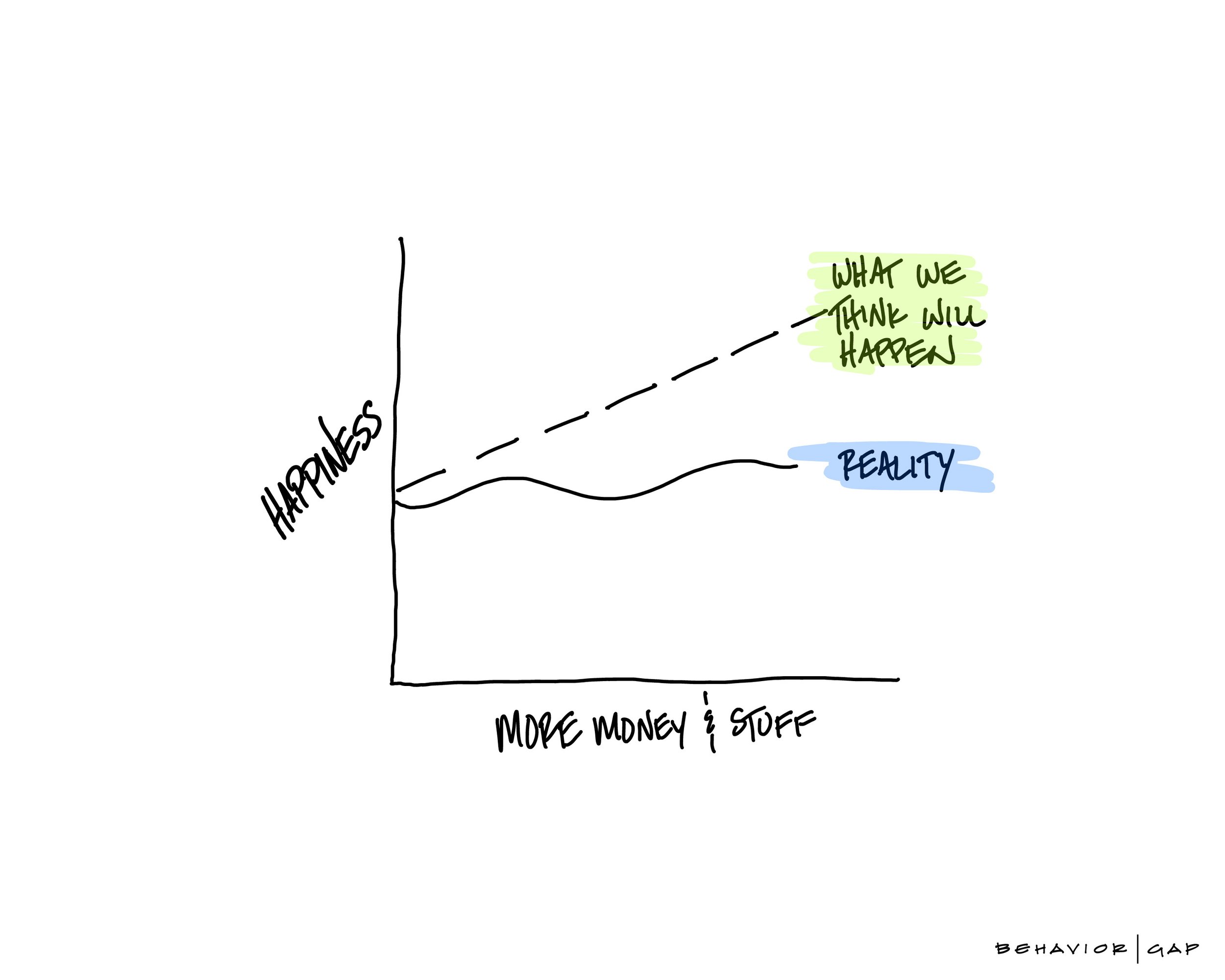222: Want to Simplify Your Money Management?
Realize that it’s about human behavior and not math.
“I feel like I was put on earth to clear up complexity. I love complexity, but I love clearing it up even more. I love getting to the other side of it.” — Carl Richards
My guest
Carl Richards is a Certified Financial Planner™ and creator of the “Sketch Guy” column that ran weekly in The New York Times (2010-2021). He is the author of The One-Page Financial Plan and The Behavior Gap book, website, and podcast.
Why this episode matters
I’ve always been more comfortable learning from images than from the written word. And that’s ironic because I can’t draw, but I love to write. So, it was no surprise to me that I was immediately drawn — no pun intended — to Carl Richard’s powerful line art that he used to introduce his New York Times “Sketch Guy” column. Carl refers to his drawings as “purpose art.”
“I know that if you're trying to illustrate something, suddenly everybody has a way to contribute. It’s a common language because it's on the side of the caves. You know what I mean? And then your point about curiosity is interesting. I sometimes refer to discussions as ‘conversation grenades,’ You throw an idea into a room, tell people to illustrate it, and conversations break out everywhere.”
There is an economy to his drawings. Think simple, simple, simple Venn diagrams, bar graphs, squiggly lines, boxes, and limited type. They immediately make me think of the old saw, “A picture is worth a thousand words.” Beyond their eye-catching aesthetic value, I believe they more readily engage the reader, support comprehension, and call forth the observer’s curiosity. As the opening act for an article related to financial planning, I immediately want to know the details of the full story.
The other reason I was drawn to Carl’s work as a financial planner is because of his focus on human behavior. Financial planning to Carl isn’t just about numbers on a spreadsheet. It’s about hopes and dreams. It’s about thoughtful courage and, oftentimes, restraint. And those human qualities and factors are often represented in his drawings. They seek to simplify what can be the very complex world of financial planning and the messy human behavior that undergirds that world.
Could this type of illustration be applied to activities in the classroom or conference room to impact learning and business productivity? Carl and the research on the power of the image are smiling.
Connect with Carl
https://www.linkedin.com/in/thinkingcarl
https://twitter.com/behaviorgap
Referenced/Resources
https://www.nytimes.com/2019/07/29/business/confidence-bias-investing.html
https://www.nytimes.com/2011/11/09/business/how-a-financial-pro-lost-his-house.html?ref=your-money
https://www.nytimes.com/2021/03/09/learning/making-graphics-with-sketch-guy.html
The Comfort Crisis: Embrace Discomfort To Reclaim Your Wild, Happy, Healthy Self by Michael Easter
”The Behavior Gap” resources
The Behavior Gap website
Behavior Gap Radio (free site)
This podcast is super simple, it's me wandering through the world, noticing things about how to align my use of capital (time and money) with what is actually important to me. --Carl
The Behavior Gap book
.
Show Credits
"Getting Unstuck" is commercial-free. It’s brought to you by Jeff Ikler, his amazing guests, and Neil Hughes, the best engineer a podcaster could ask for.
"Getting Unstuck" theme music: Original composition of "Allegro ben ritmato e deciso" by George Gershwin. Arrangement and recording courtesy of Bruno Lecoeur.



